Customer engagement platforms enable product, engineering, and marketing teams to coordinate personalized user experiences across email, SMS, push notifications, in-app messaging, and more.
These experiences can help drive product adoption, reactivate dormant users, or promote new products or services to an already-enaged audience. As such, these platforms can be very valuable, especially for large or quickly-growing user bases.
Choosing the right customer engagement platform for your product can mean the difference between disjointed, ineffective campaigns and seamless, data-driven customer journeys that drive retention and growth.
This guide examines the top 9 customer engagement platforms in 2026, breaking down their key features, strengths, and ideal use cases to help you make an informed decision.
What is a customer engagement platform?
A customer engagement platform (CEP) is a unified software solution that helps businesses manage, analyze, and optimize customer interactions across multiple channels. These platforms combine communication tools, data analytics, and automation capabilities to deliver personalized experiences throughout the customer journey.
How to evaluate customer engagement platforms
Before diving into specific platforms, let's establish what teams should look for in a customer engagement solution:
- Data flexibility and orchestration. The best platforms let you ingest and consolidate customer data from any source into unified profiles. This enables fine-tuned personalization for any message you send (or don’t send). Look for solutions that support multi-tenancy and have flexible data models that can handle your unique customer attributes, events, and behaviors without forcing you into rigid schemas.
- Cross-channel coordination. Modern customer engagement requires more than sending messages—it's about orchestrating experiences across email, SMS, push, in-app, and emerging channels. The platform should handle complex workflows with branching logic, delays, and channel optimization.
- Scalability and performance. As your customer base grows, your platform needs to handle millions of events and messages without latency issues or exponential cost increases. Real-time data processing and message delivery are essential for time-sensitive campaigns, and retry logic is critical for important transactional messages.
- Team enablement. Typically, multiple teams will need to use the platform for various use cases, so it should be able to meet the needs of each. Engineering teams need robust APIs, comprehensive documentation, and reliable infrastructure. Product and marketing teams need visual workflow builders, audience segmentation tools, and the ability to launch campaigns without engineering support. Analytics teams need access to raw data and attribution insights.
Based on this criteria, we’ve shortlisted 9 solutions:
- Knock
- Braze
- Customer.io
- Iterable
- HubSpot
- MoEngage
- Klaviyo
- CleverTap
- ActiveCampaign
The top customer engagement platforms
Knock
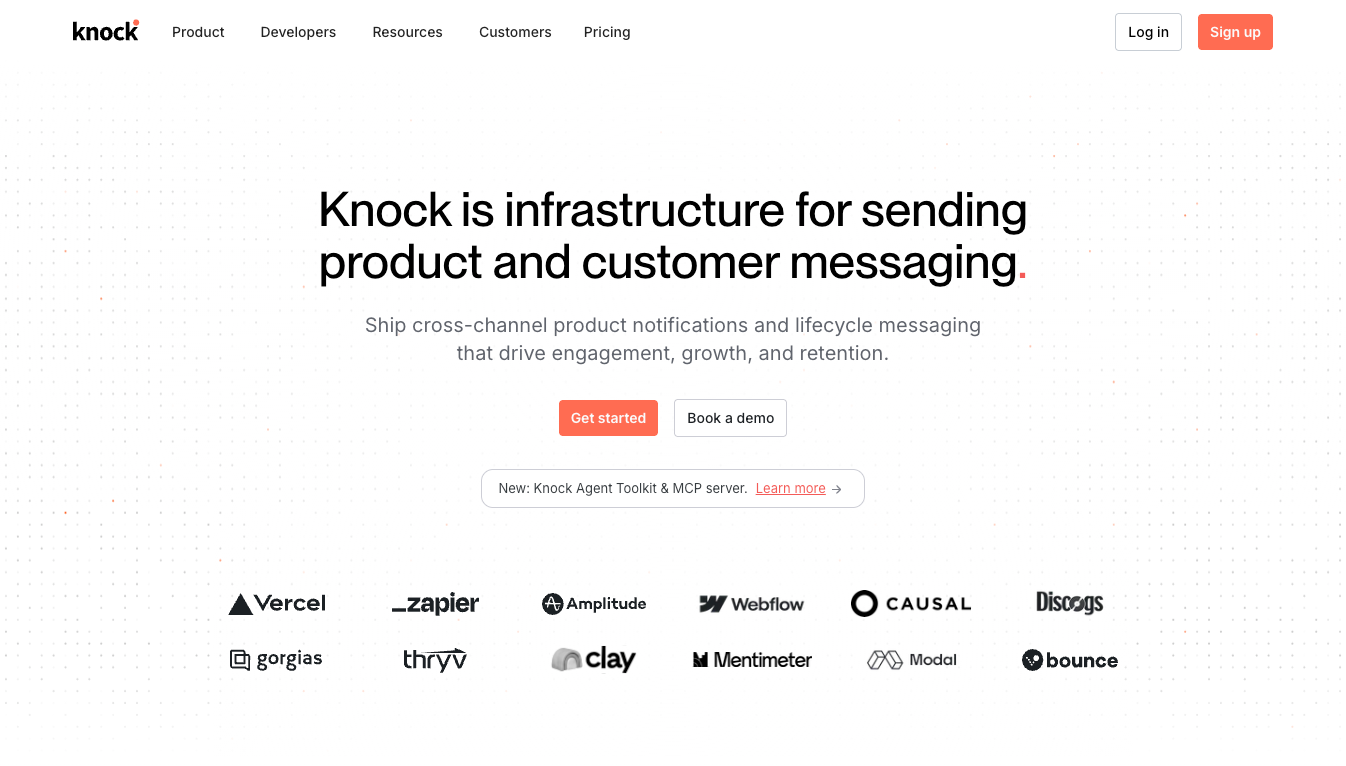
While traditional customer engagement platforms focus on marketing campaigns, Knock takes a different approach. It provides the notification infrastructure that powers engagement within your product—from transactional alerts to in-app feeds to cross-channel messaging workflows.
Then, product and marketing teams can use that infrastructure to send highly-personalized in-app experiences, lifecycle messaging, and one-off campaigns.
Key features
- Cross-channel orchestration (email, SMS, push, in-app, chat, webhooks).
- Pre-built React components for seamless in-app messaging.
- Liquid templating for dynamic content.
- Visual workflow builder for complex notification logic.
- Rich observability features and engagement analytics.
- AI-native features like an MCP server that let you create campaigns with natural language.
- Device and client-specific email template previews.
Strengths
- Purpose-built for high-volume, real-time notifications.
- Supports advanced functionalities like batching, throttling, and preference management.
- Developer-friendly with comprehensive SDKs and APIs.
- Ships with production-ready components.
- Production-grade observability, monitoring, and analytics.
- Multi-tenant support, role-based access, compliance (GDPR, HIPAA).
- No limits or charges for user data storage.
Considerations
- Requires some technical integration (though less than building in-house).
- Not a traditional CDP or marketing platform.
Bottom line: Knock is the ideal solution when engineering, product, and growth teams work together closely to drive engagement. Engineers love Knock’s developer-first approach, giving them complete control over the implementation and design system, while product managers and growth marketers love the ability to hyper-personalize messaging and send across any channel.
If this sounds like you, you can learn more about Knock by signing up for a free account or chat with our team. 👋
Braze
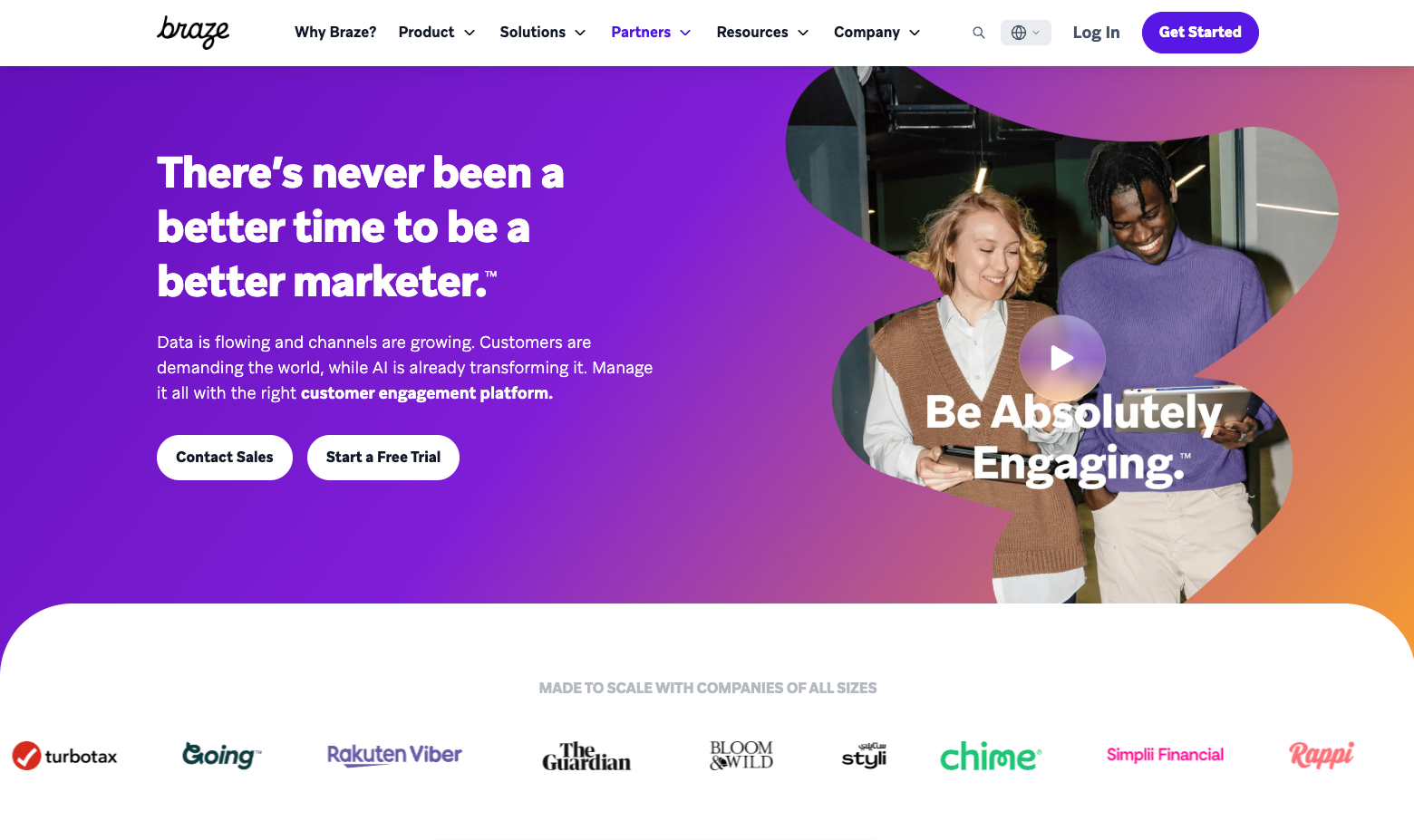
Founded in 2011 as Appboy, Braze has become a dominant player in mobile-first customer engagement for the enterprise, though its complexity and cost can be prohibitive for smaller organizations.
Key features
- Mobile messaging capabilities for push notifications, in-app messaging, and SMS.
- Real-time data streaming and activation.
- Canvas journey builder for multi-step campaigns.
- Basic AI features for content generation.
- Analytics and reporting dashboards.
Strengths
- Strong mobile channel support.
- Fast message delivery speeds.
- Robust segmentation and targeting capabilities.
- Strong security and compliance features.
Considerations
- Steep learning curve for new users.
- Expensive with hidden costs for data points and MAUs
- Limited built-in CDP requiring third-party integrations
- Requires technical resources for implementation.
Customer.io
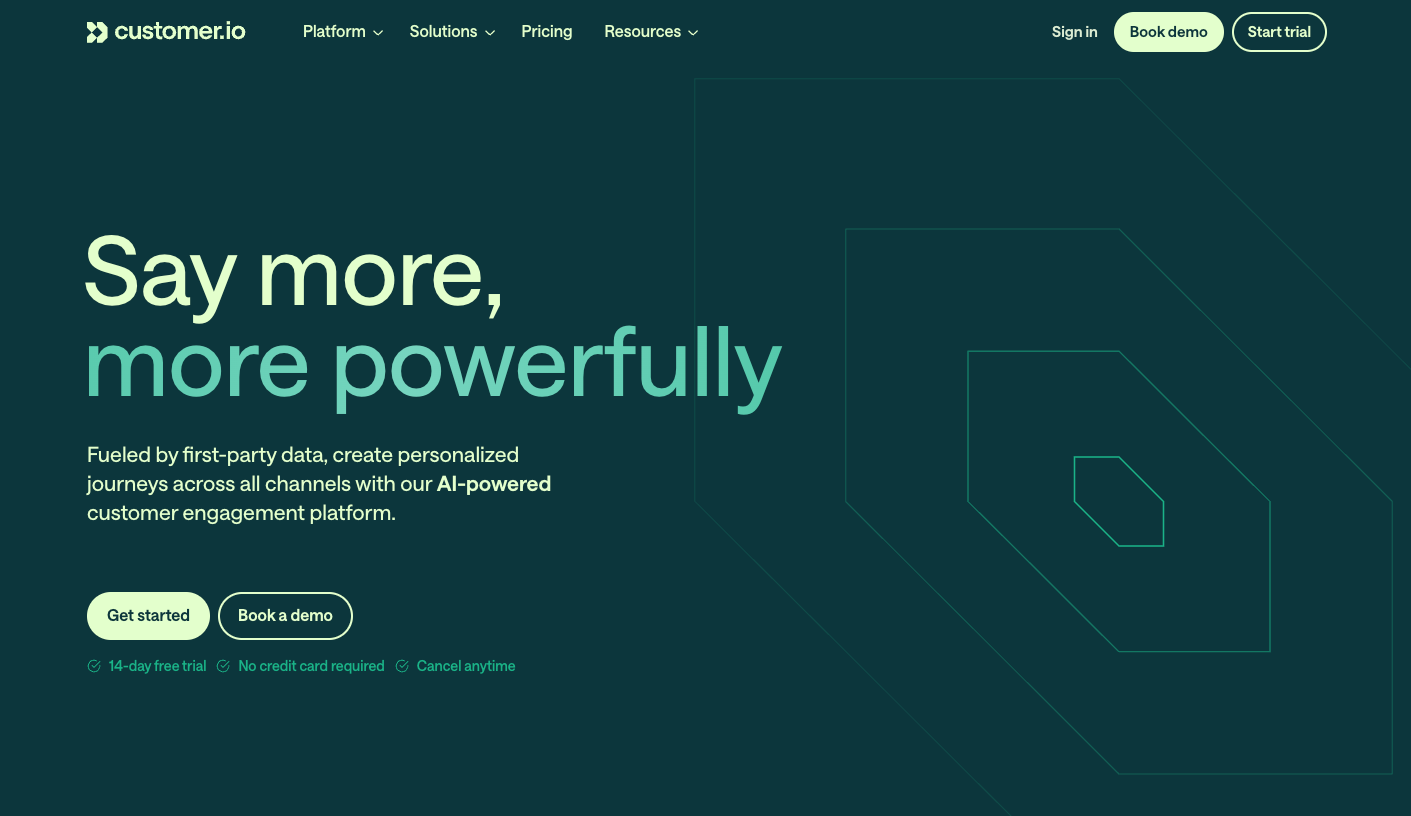
Customer.io positions itself as a flexible alternative to enterprise platforms like Braze, though it still requires significant technical expertise to implement effectively.
Key features
- Visual workflow builder with drag-and-drop interface.
- Flexible data model with unlimited events and attributes.
- Multi-channel messaging (email, SMS, push, webhooks).
- Liquid templating for dynamic content.
- Some transactional messaging capabilities.
Strengths
- No strict user limits.
- Developer-friendly API and documentation.
- Flexible data model.
Considerations
- Limited AI capabilities compared to competitors.
- Fewer pre-built integrations than enterprise platforms.
- Basic analytics require external tools for advanced insights.
Iterable
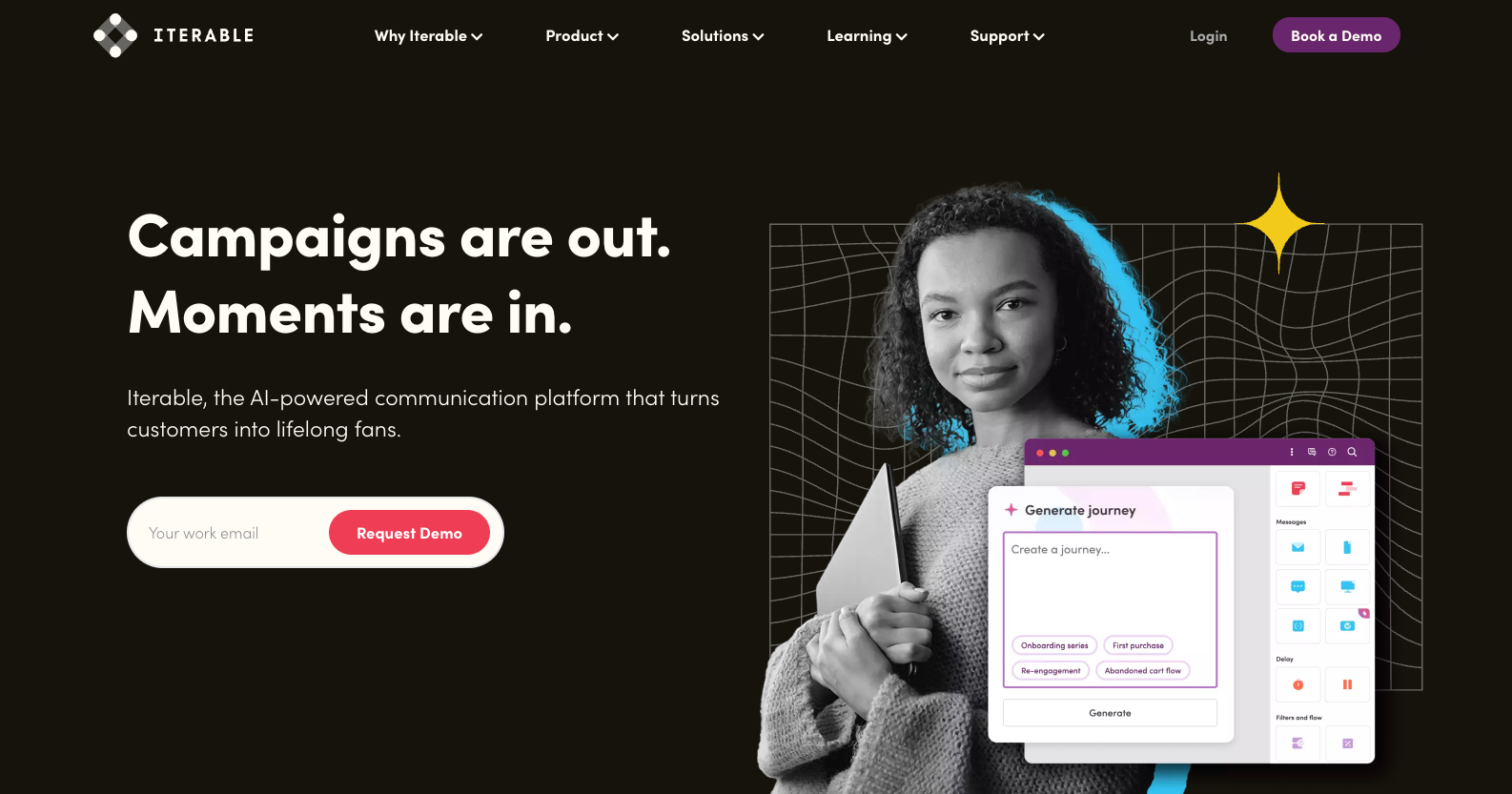
Founded in 2013, Iterable has gained traction among brands looking for Braze-like capabilities with less complexity, combining marketing automation with an intuitive interface.
Key features
- Unified workflow editor for cross-channel campaigns.
- Basic AI-powered optimization (send time, content selection).
- Mobile inbox for persistent in-app messaging.
- Built-in A/B testing and experimentation.
- Dynamic segmentation based on real-time data.
Strengths
- Balance of power and usability.
- Comprehensive email marketing tools.
- Good integration ecosystem.
Considerations
- Limited advanced mobile features.
- Some noted performance issues with large data volumes.
- Reporting capabilities could be more robust.
- Higher price point for smaller companies.
HubSpot

HubSpot's customer engagement capabilities are part of its broader CRM platform, making it attractive for companies wanting marketing, sales, and service tools in one place. This all-in-one platform works well for simple use cases but can struggle with sophisticated requirements at scale.
Key features
- Integrated CRM with full customer context.
- Marketing automation with visual workflows.
- Email marketing with drag-and-drop editor.
- Landing page and form builders.
- Built-in analytics and attribution reporting.
Strengths
- User-friendly interface with minimal learning curve.
- Free tier available for basic features.
- Strong educational resources and community.
- Native integration between marketing and sales.
Considerations
- Limited advanced features without costly add-ons.
- Weak multi-channel capabilities.
- Mobile engagement features are less robust.
- Becomes expensive as you scale.
MoEngage
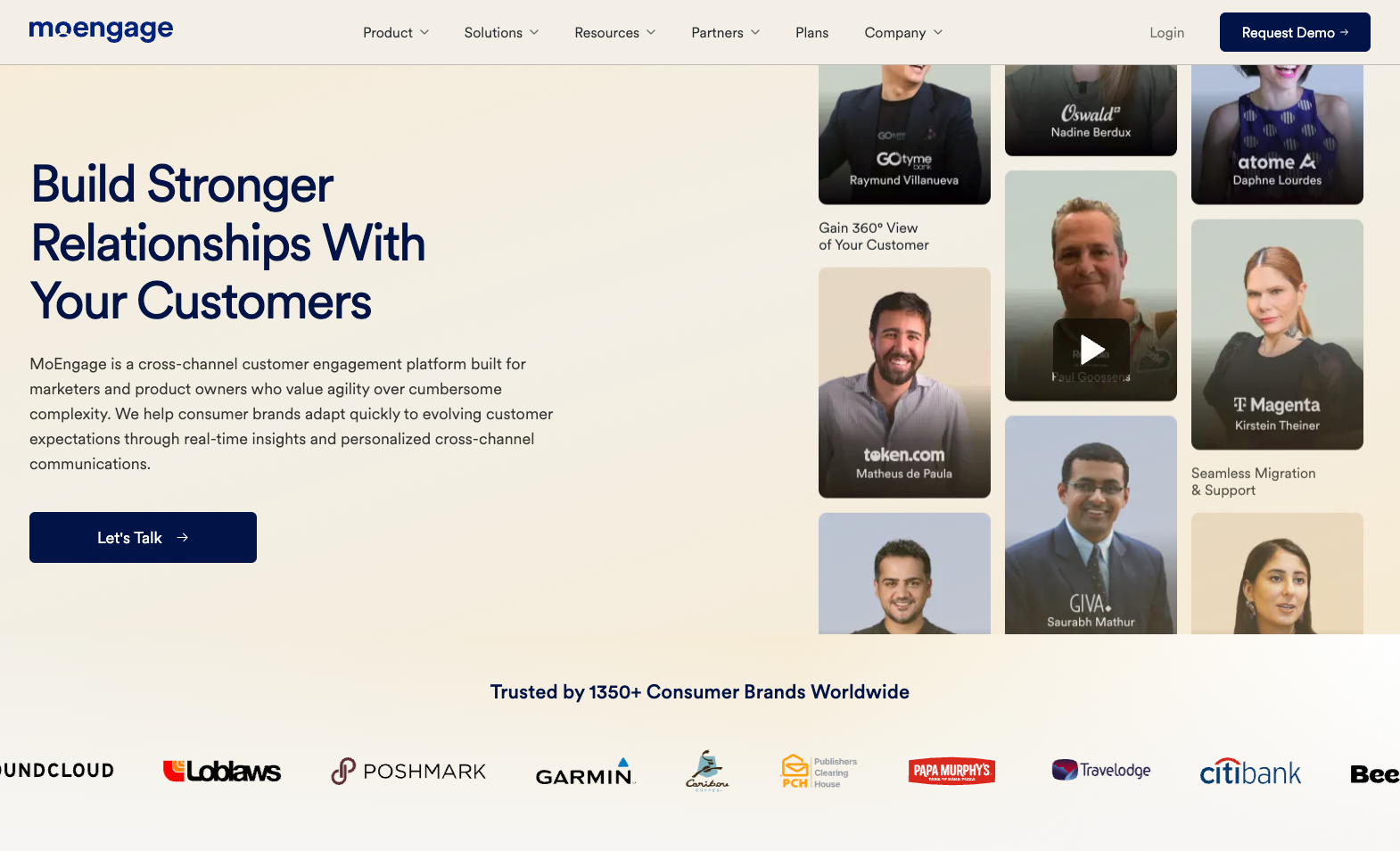
MoEngage has carved out a niche serving mobile-centric businesses, particularly in Asia and other emerging markets. While competitively priced, it lacks the maturity of established platforms.
Key features
- AI-powered campaign optimization (Sherpa AI).
- Multi-channel messaging with mobile focus.
- User path analysis and funnel visualization.
- Supports dynamic messaging.
Strengths
- Strong mobile app analytics.
- Built-in push amplification.
- Competitive pricing for the feature set.
Considerations
- Less mature than established players.
- Fewer integration options.
- Lacks advanced orchestration capabilities.
- Some reported platform stability issues.
Klaviyo
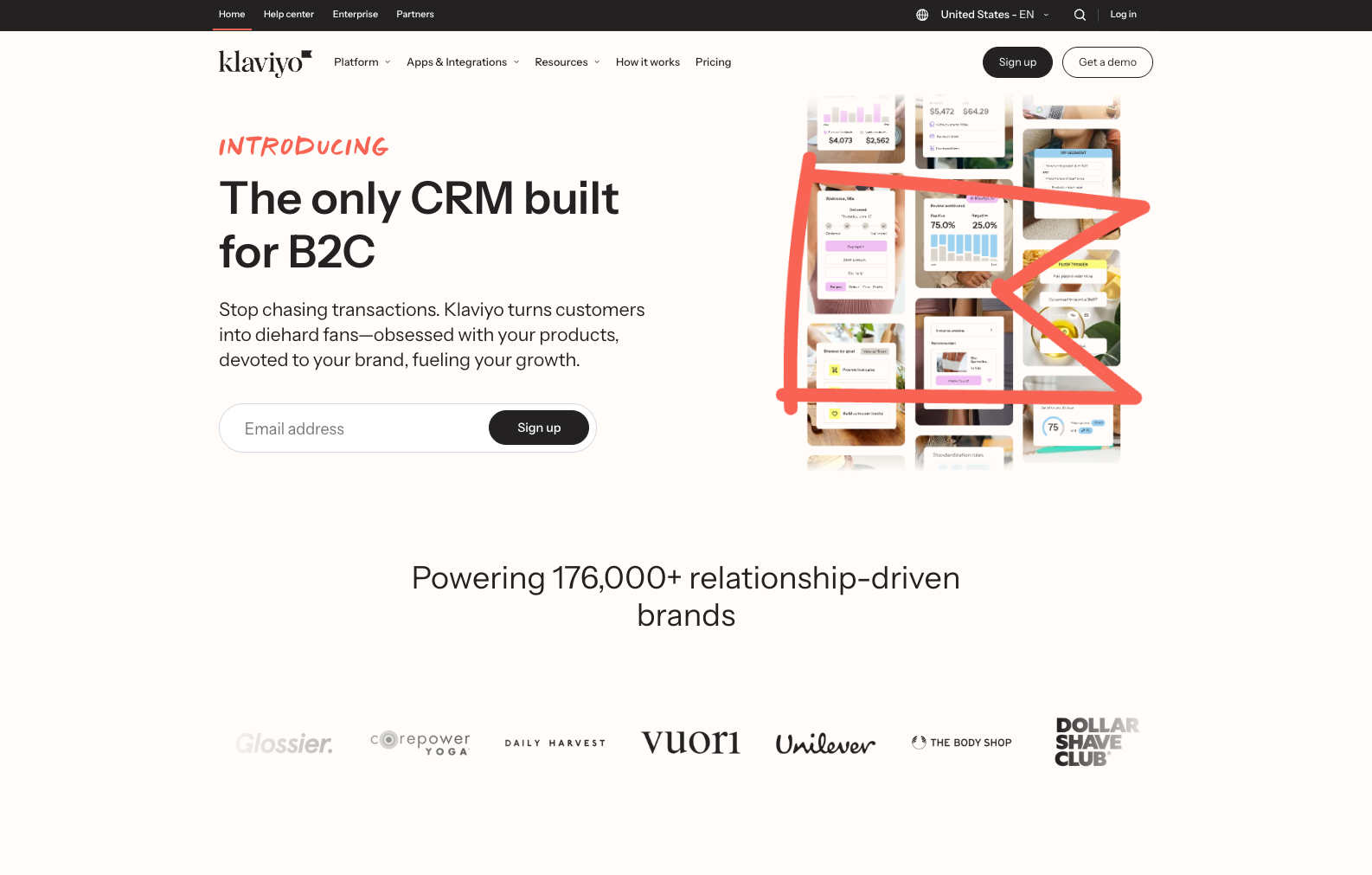
Klaviyo dominates e-commerce email marketing but remains limited outside that niche. Companies that need more than its deep Shopify integration and basic email marketing features should look elsewhere.
Key features
- Deep e-commerce integrations (Shopify, BigCommerce).
- Advanced email segmentation and automation.
- Basic SMS capabilities.
- Predictive analytics for CLV and churn.
- Built-in forms and pop-ups.
Strengths
- Purpose-built for e-commerce use cases.
- Strong ROI tracking and revenue attribution.
- Solid template library.
- User-friendly email marketing interface.
Considerations
- Limited capabilities outside e-commerce.
- Basic mobile app engagement features.
- Basic personalization beyond email.
- Expensive as contact lists grow.
CleverTap
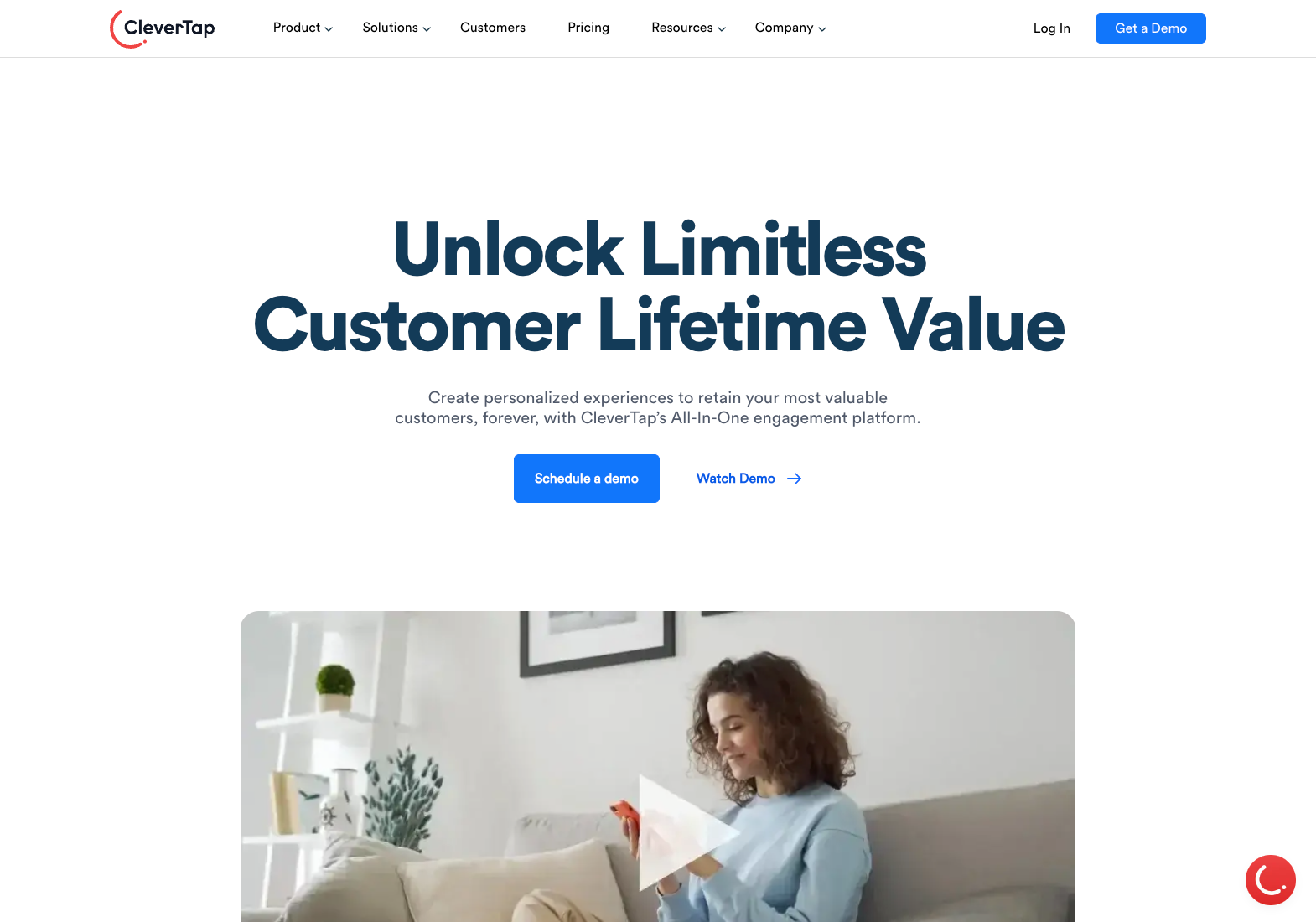
CleverTap focuses on mobile app engagement and analytics, though it struggles to compete with more established platforms in terms of features and reliability.
Key features
- Real-time user segmentation.
- Omnichannel campaign orchestration.
- Advanced mobile analytics with cohort analysis.
- Built-in A/B testing framework.
Strengths
- Comprehensive mobile analytics.
- Fast data processing (TesseractDB).
- Good value for mobile-focused companies.
- Strong predictive capabilities.
Considerations
- Weak web and email capabilities.
- Smaller ecosystem of integrations.
- Some reported reliability issues.
- Lack of developer-friendly documentation.
ActiveCampaign
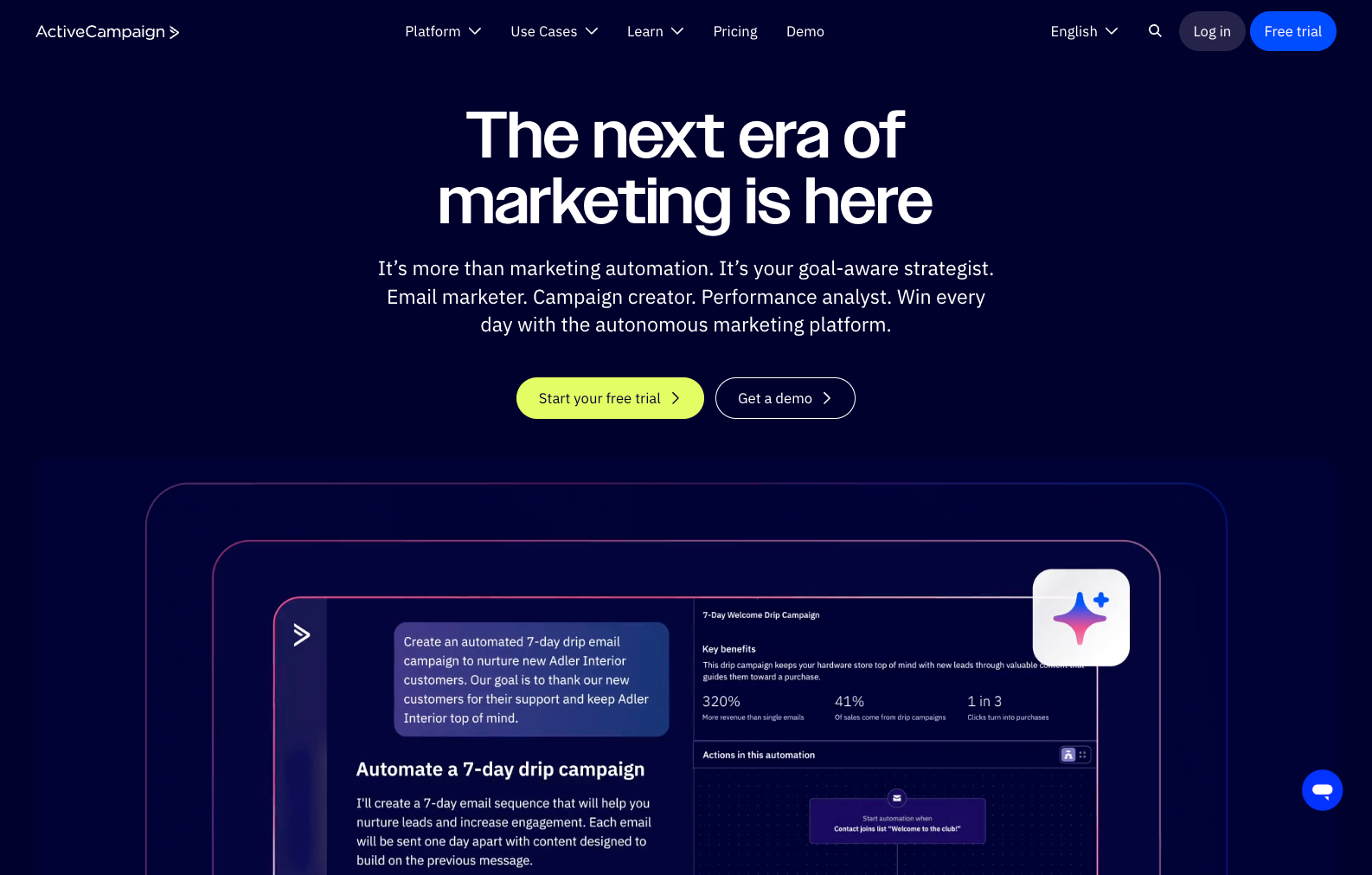
ActiveCampaign prioritizes email marketing and lacks advanced features in other channels. While affordable, it lacks the sophistication that most need for true cross-channel engagement.
Key features
- Email marketing with automation.
- Basic CRM functionality.
- Lead scoring and sales automation.
- SMS marketing capabilities.
- Machine learning for optimization.
Strengths
- Affordable entry pricing.
- Intuitive automation builder.
- Strong deliverability rates.
- Simple UX with good customer support.
Considerations
- Limited omnichannel capabilities.
- Weak mobile engagement features.
- Limited scalability with CRM and large lists.
- Limited reporting and analytics.
How to choose the right customer engagement platform
Selecting a customer engagement platform requires careful evaluation of your specific needs:
Channel requirements: Most platforms claim omnichannel support but excel in only one or two areas, such as ActiveCampaign with email, Braze with mobile, or CleverTap with in-app messaging. Tools like Knock or Customer.io are better for true omni-channel messaging.
Technical resources: Nearly all platforms require more technical expertise to set up and implement than they will suggest. Make sure your engineering team is brought into the decisionmaking process, or that you budget for implementation partners.
Scalability needs: Ensure the platform can grow with your business. Some platforms that work well for small teams may not scale effectively.
Integration challenges: Consider how the platform will fit into your existing tech stack. Native integrations can significantly reduce implementation complexity. Some platforms may require dedicated technical resources to integrate with your existing tech stack and only offer limited functionality.
Total cost of ownership: Published pricing (if shared) rarely reflects reality. Many solutions leave it up to the end user to factor in costs related to implementation, training, overages, and add-on features to actually get up and running. Make sure you understand what costs these areas will entail before you sign a contract.
Making customer engagement data actionable
While these platforms provide powerful capabilities for orchestrating customer journeys, they often stop at message delivery. The real challenge is understanding how those messages drive actual engagement within your product.
That's where notification infrastructure becomes critical. When your customer engagement platform triggers an email about a new feature, you need to know if users actually engage with that feature. When you send a push notification about an abandoned cart, you need visibility into whether customers complete their purchase.
This is the gap that dedicated notification infrastructure like Knock fills—providing the technical foundation to not just send messages, but to track their impact on user behavior and iterate based on real engagement data.
Increase customer engagement with Knock
Engaging your customers effectively ultimately depends on your ability to leverage customer data, create meaningful personalization, and continuously optimize based on results. In an age of endless noise, the brands that win are those that engage thoughtfully, personally, and at exactly the right moment.
As such, the best customer engagement platforms have evolved from simple email tools to sophisticated orchestration engines, each with unique strengths for different use cases. Choose a platform that aligns with your current needs while providing room to grow as your engagement strategy matures.
Whether you’re planning to build notification infrastructure, increase product adoption, or send lifecycle messaging, Knock can help. If you'd like to try it out, you can sign up for a free account or chat with our team. 👋